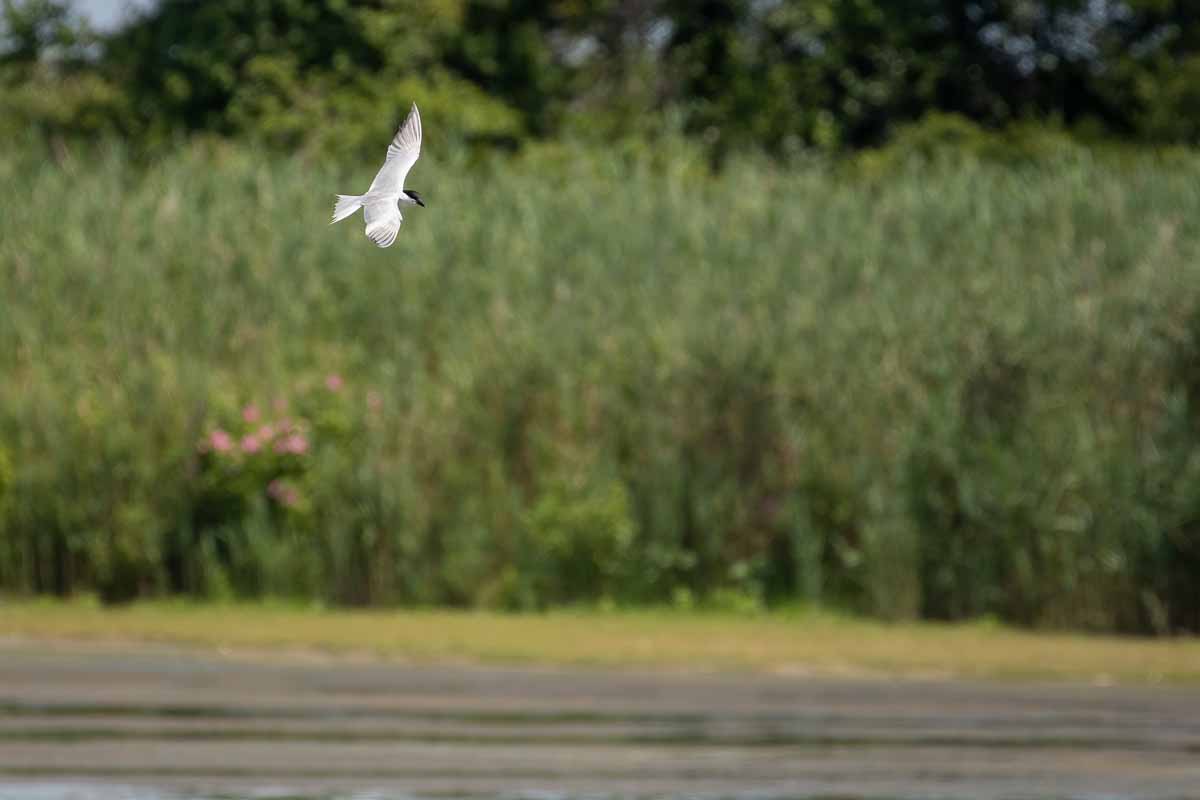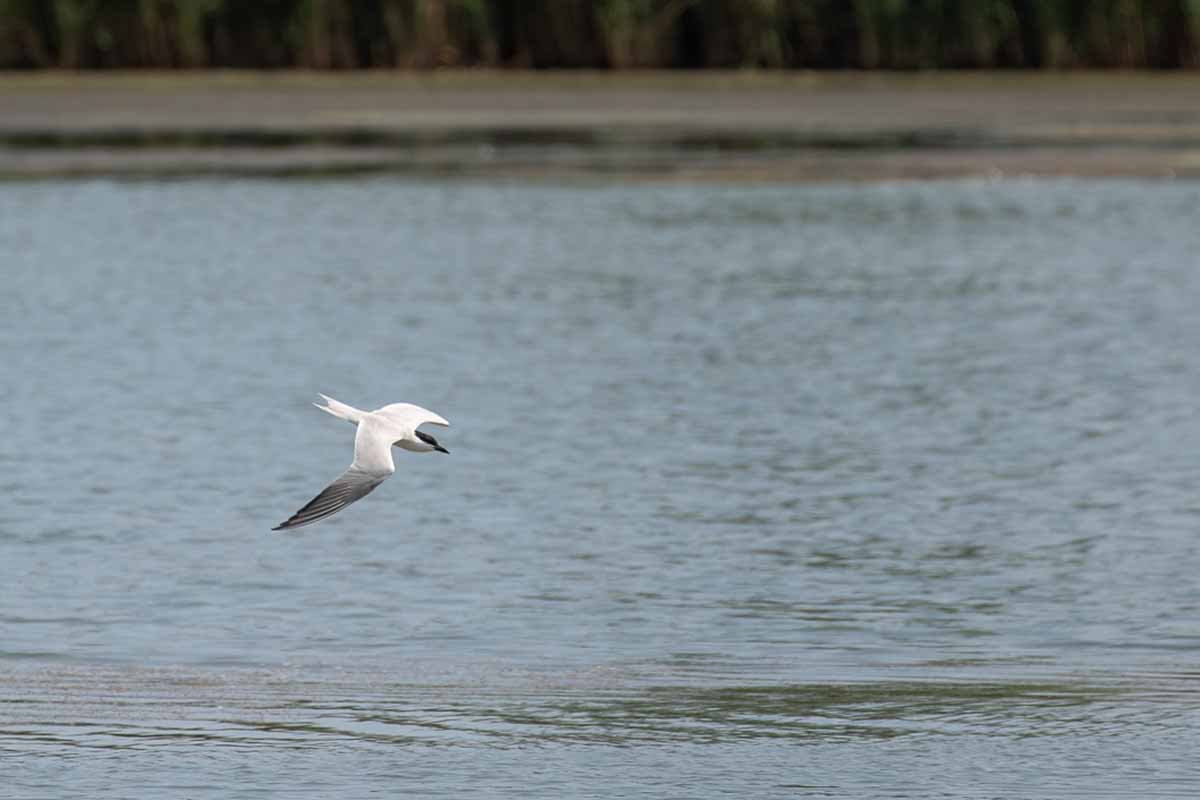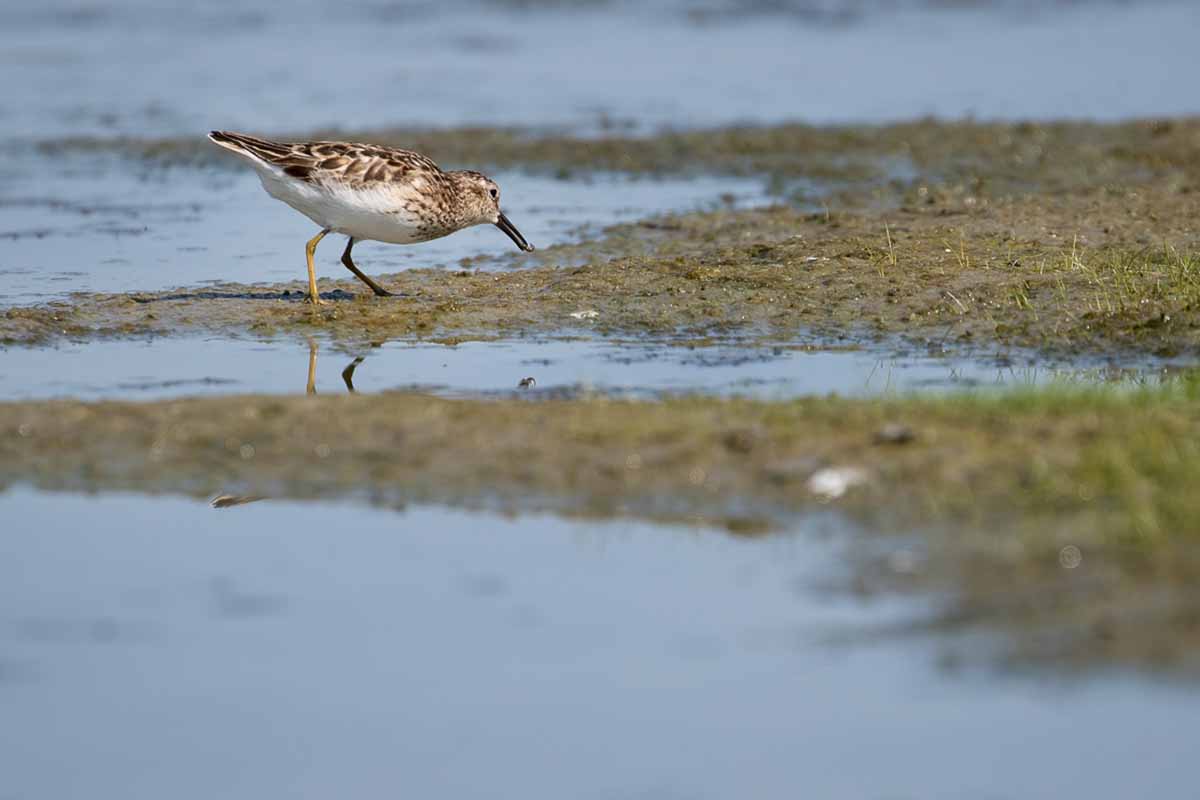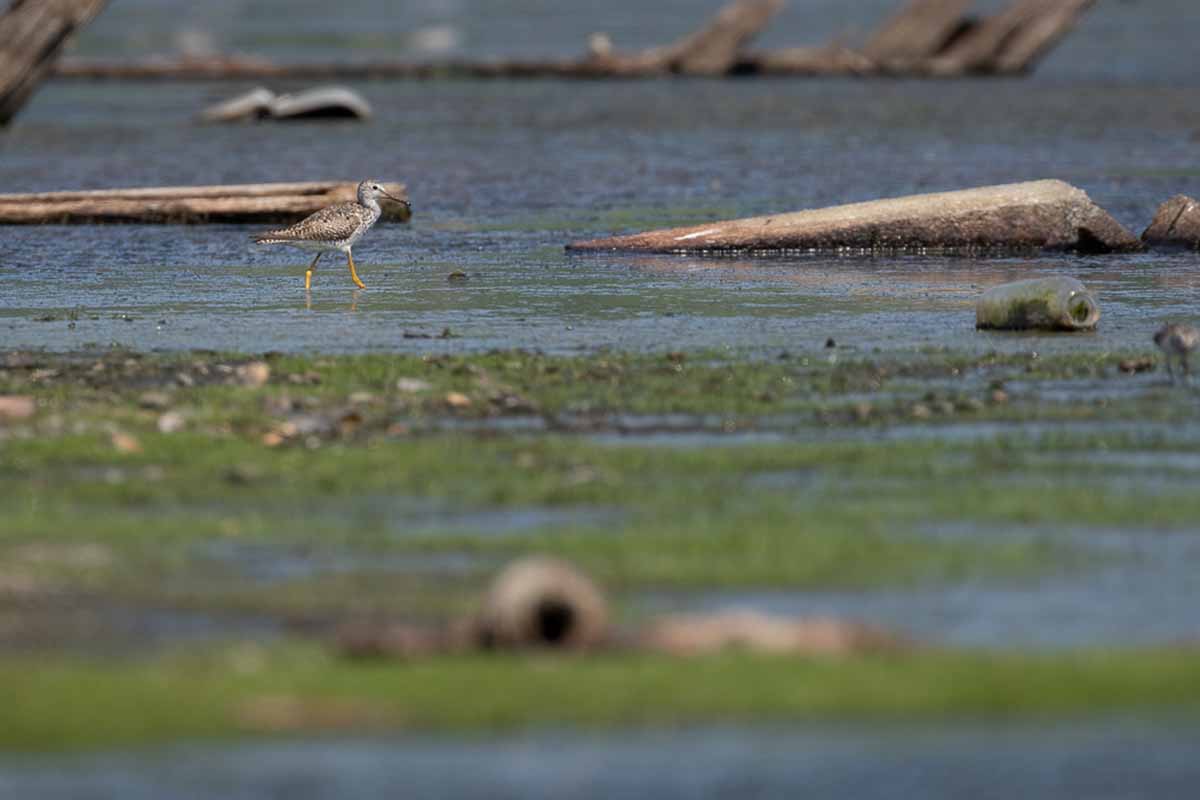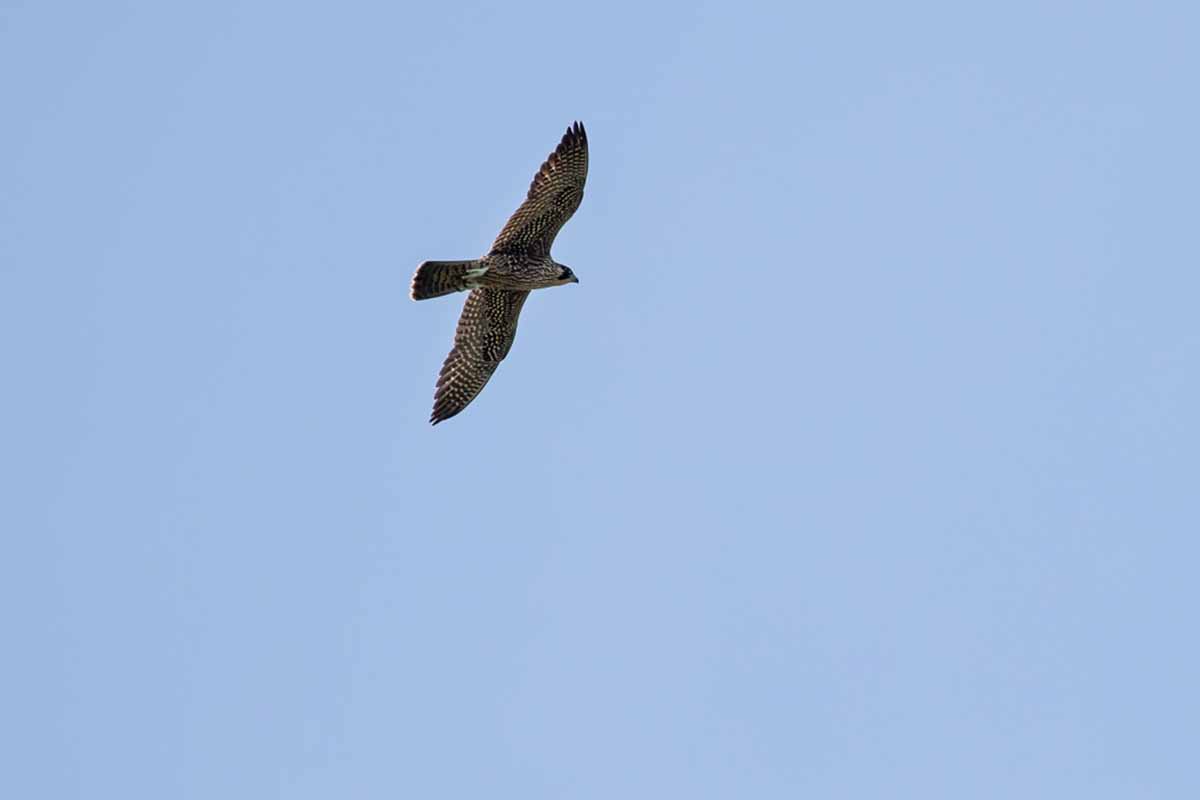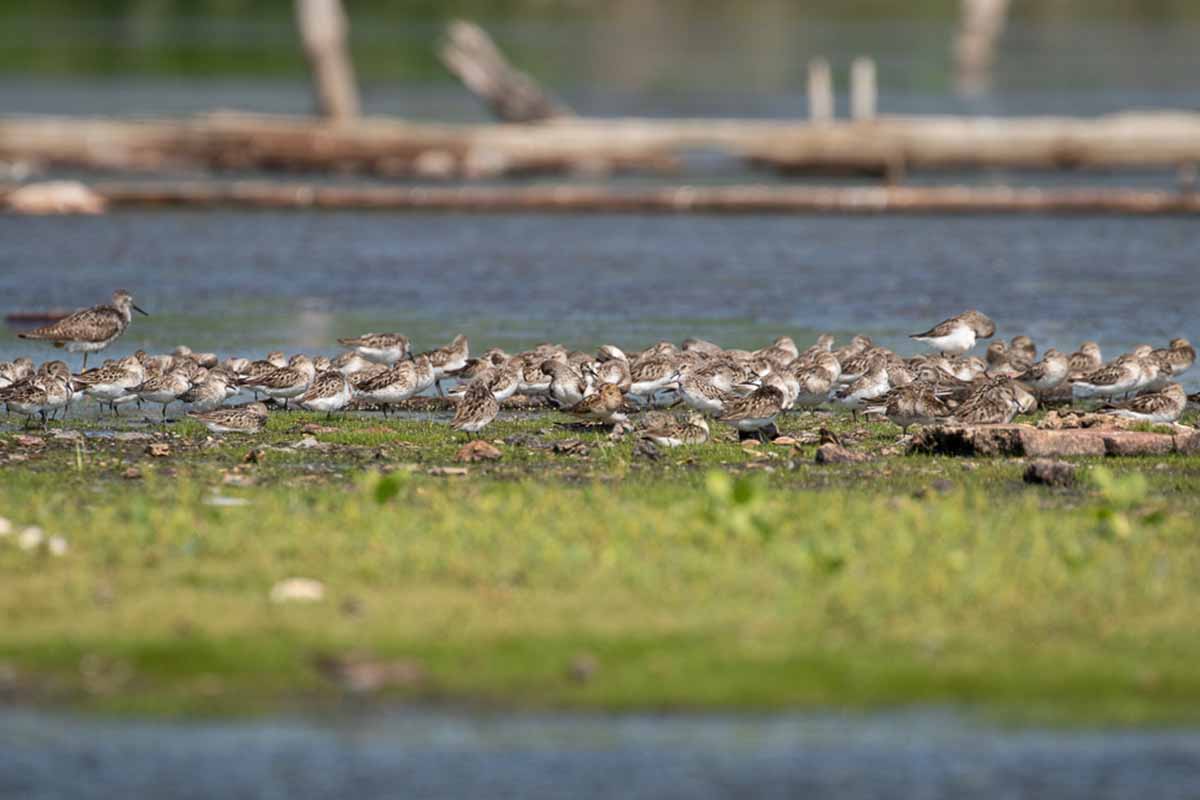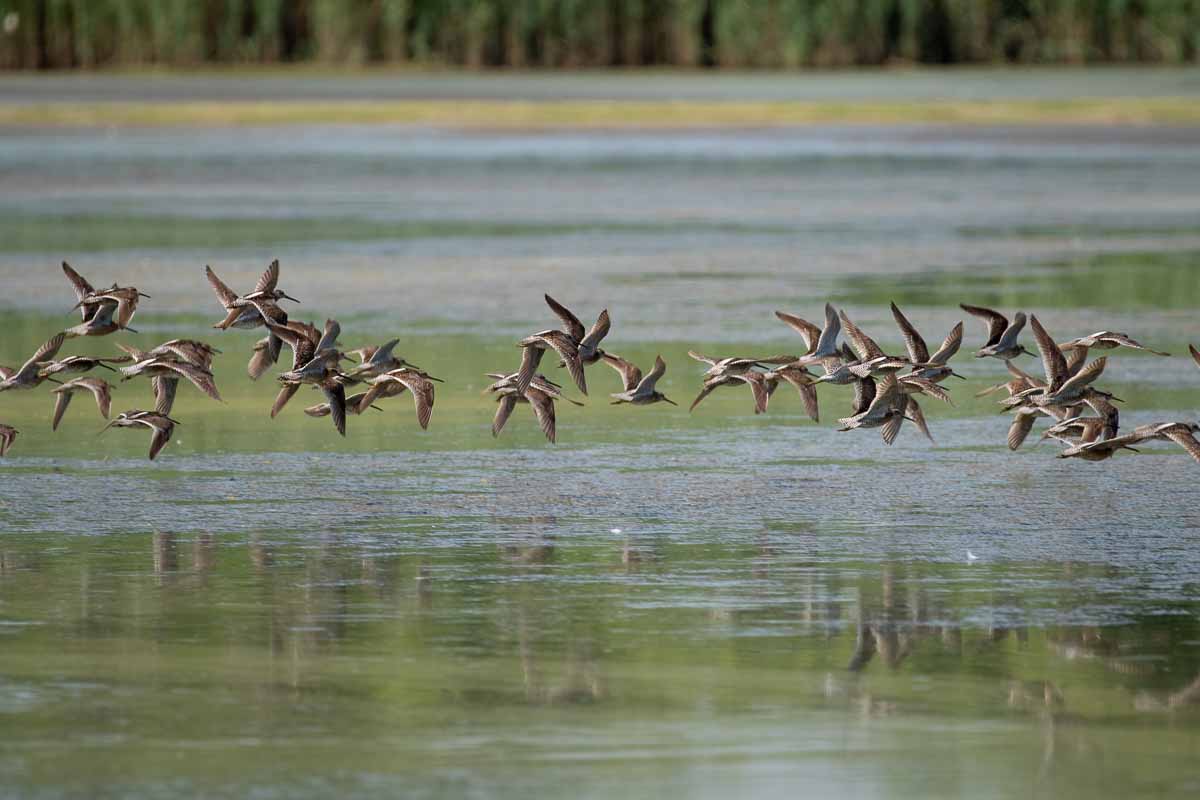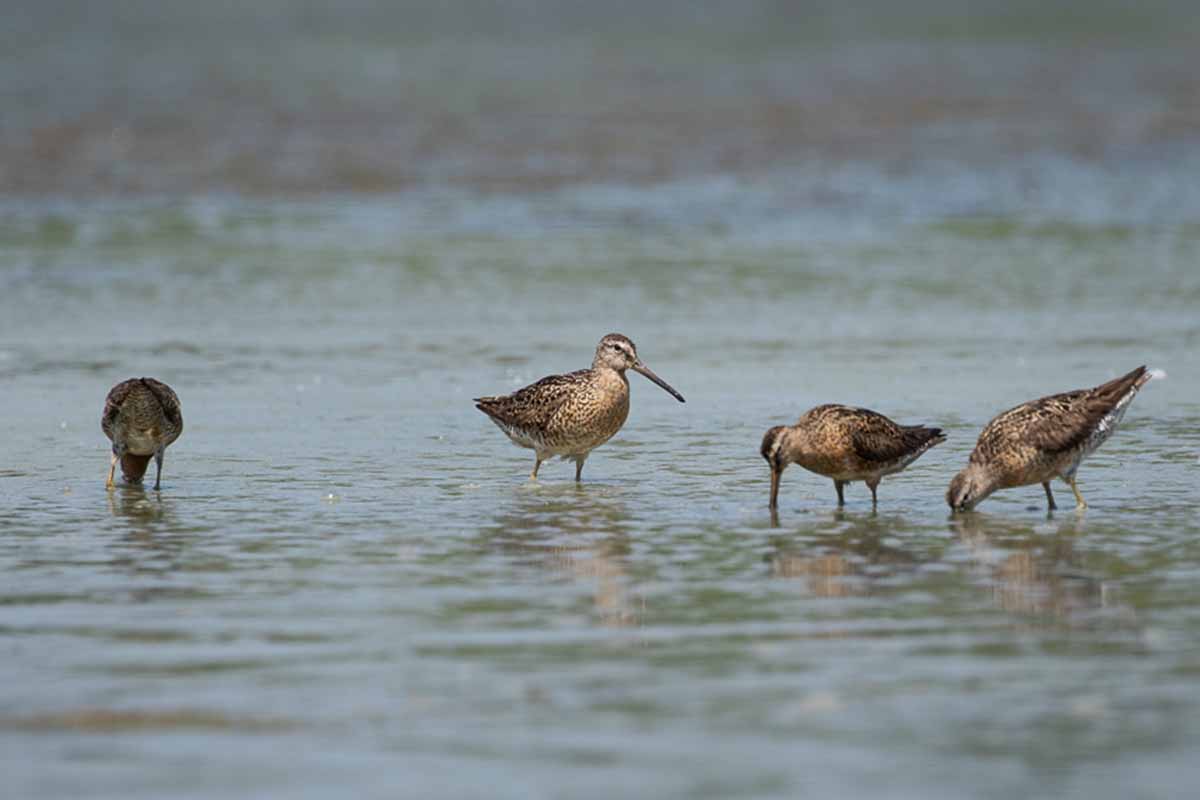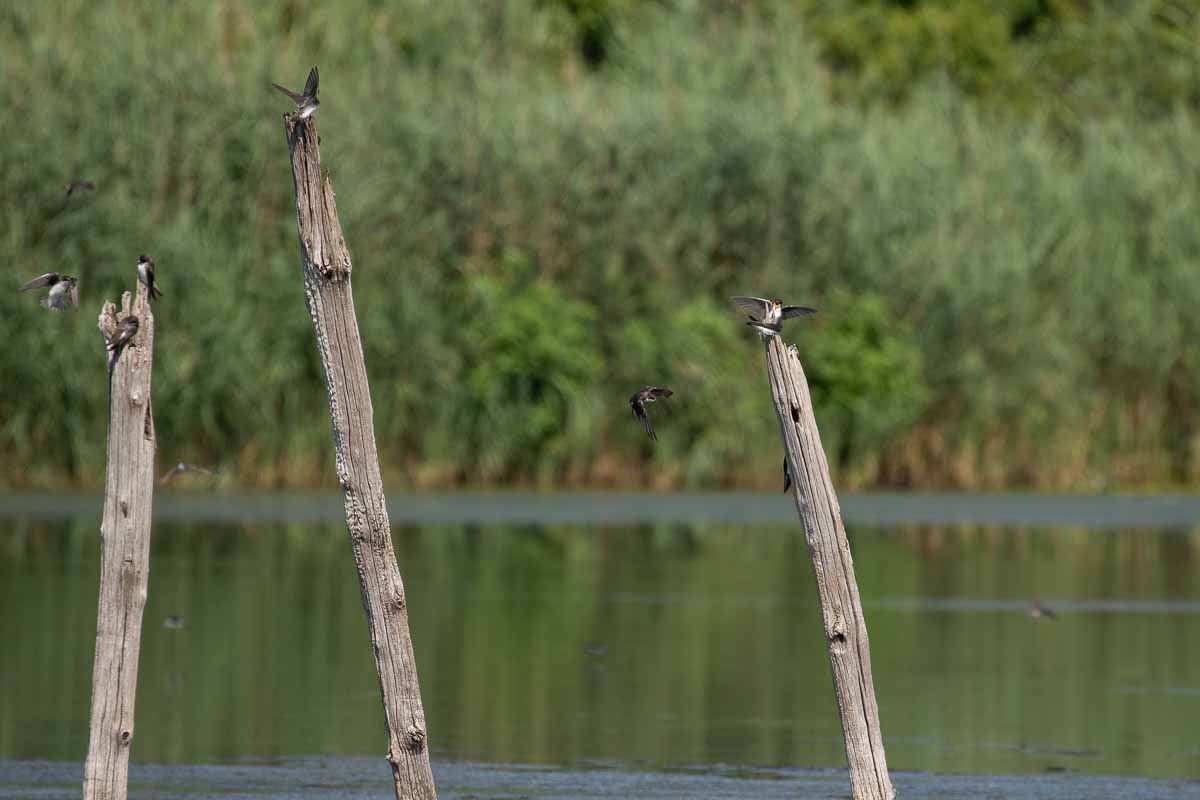Registrar: Ellen Hoffman (with Anne Lazarus on site)
Trip Report: Anne Lazarus
Participants: 10
Weather: Clear, temp. mid 80s F, winds 10-15 mph
Bird Species: 57
Our hardy group then marched through the muck and mud to the Raunt, which attracts birds to its many posts and logs and where we saw large numbers of peeps, more Short-billed Dowitchers, and Spotted Sandpipers. Our goal, however, was the Long-billed Dowitcher, and we finally found it, mixed in with a large number of Short-billed Dowitchers. Other treats were a Willow Flycatcher perched atop a high tree and singing its “Fitz Bew,” and Bank Swallows mingling with Tree, Barn and Northern Rough-winged Swallows. We also enjoyed our parking lot birds—Yellow Warbler, Carolina Wren, House Wrens, Northern Mockingbirds, Gray Catbird, and more. Birds were everywhere.
Butterflies and odonates were also plentiful. En route to the East Pond we saw several tenerals—newly emerged odonates, not yet in adult colors, their bodies and wings still hardening. These were damselflies; Rambur’s Forktails and Familiar Bluets are common denizens of Jamaica Bay. Not as common was an immature male Variable Dancer.
Species Lists
Birds
Black-bellied Whistling-Duck
Canada Goose
Mute Swan
Gadwall
Mallard
American Black Duck
Northern Pintail
Ruddy Duck
Rock Pigeon
Semipalmated Plover
Killdeer
Least Sandpiper
Semipalmated Sandpiper
Short-billed Dowitcher
Long-billed Dowitcher
Spotted Sandpiper
Greater Yellowlegs
Lesser Yellowlegs
Laughing Gull
Ring-billed Gull
Herring Gull
Great Black-backed Gull
Gull-billed Tern
Common Tern
Forster’s Tern
Double-crested Cormorant
Great Blue Heron
Great Egret
Snowy Egret
Black-crowned Night-Heron
Yellow-crowned Night-Heron
Glossy Ibis
Osprey
Peregrine Falcon
Willow Flycatcher
American Crow
Fish Crow
Northern Rough-winged Swallow
Purple Martin
Tree Swallow
Bank Swallow
Barn Swallow
House Wren
Carolina Wren
European Starling
Gray Catbird
Northern Mockingbird
American Robin
House Sparrow
American Goldfinch
Eastern Towhee
Red-winged Blackbird
Common Grackle
Boat-tailed Grackle
Northern Waterthrush
Yellow Warbler
Northern Cardinal
Butterflies
Cabbage White
Azure, most likely Summer
Eastern-tailed Blue
Anglewing Butterfly
Monarch
Broad-winged Skipper
Odonates
Bluet, possible Familiar Bluet (teneral)
Variable Dancer (male immature)
Rambur’s Forktail (teneral)
Blue Dasher
Green Darner
